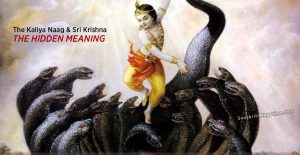
Dwarka and Shardapith – the holy sites of Dwaraka
Dwarka is one of the four shaktipiths (also referred as Shardapiths) established by Adi Shankaracharya. Others are Jyotishpith in the North, Shringeri pith in the

Dwarka is one of the four shaktipiths (also referred as Shardapiths) established by Adi Shankaracharya. Others are Jyotishpith in the North, Shringeri pith in the

The Venugopalaswamy Temple located at Hosa Kannambadi, near Krishna Raja Sagara, is a beautiful example of Hoysala architecture in Karnataka. The temple was originally built

“There is a beautiful lake of very sweet water in the Yamuna, which bears the name of Kaliya. This lake happened to be infested by

BENGALURU: In a major breakthrough in the killing of journalist-activist Gauri Lankesh, the Special Investigation Team probing the murder took into custody 38-year-old Naveen Kumar

NEW DELHI: Hindi film star Anushka Sharma’s new film ‘Pari’ has been banned in Pakistan, as it “promotes black magic, some non-Islamic values and anti-Muslim

PANAJI: Goa police registered a 400% increase in drug cases in 2017 as compared to 2016. Most cases were booked in the last five months,

Chhath Puja is one of the most revered festivals, especially in Bihar, Jharkhand, and Uttar

As the festival of lights approaches, the excitement for Diwali grows. Celebrated across India and

Learn about the significance and rituals of Navratri Day 9, dedicated to Goddess Siddhidatri, who grants all supernatural powers. Discover her mantra, spiritual significance, and how to worship her for fulfillment.

Discover the significance of Navratri Day 8 as we honor Goddess Mahagauri, the symbol of purity and serenity. Learn about the rituals, mantra, and offerings for this special day of Navratri 2024.

Explore the significance and rituals of Navratri Day 7 dedicated to Goddess Kalaratri, the fierce form of Durga. Discover her connection to the Sahasrara Chakra, her mantra, offerings, and more.

Sanskriti comes from the Sanskrit root “kr” which means to do or to make prefix “sam” is applied before it to convey a sense of embellishment. It means actions done for the holistic refinement and perfection all the potentialities within a human being.
“The term “Rishi” in Sanskrit originates from a root that means “To See.” Rishis, quite literally, “see” truths that are unveiled to them in elevated states of consciousness. .These are recorded in Sacred texts called Upanishads , Vedas etc. The wisdom imparted by ancient Rishis has not only enriched the realm of inner science but has also played a pivotal role in shaping and advancing modern scientific understanding. Let us Explore……
Copyright © 2024. Sanskriti Magazine
Copyright © 2024. All rights reserved.